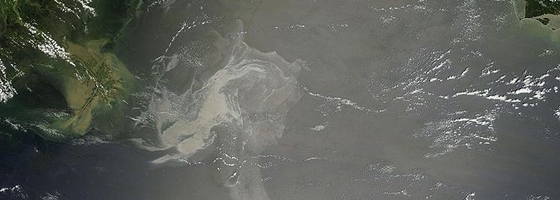Algal blooms and oil spills: Turner Designs marketing and sales VP on 40 years of fluorometers

Turner Designs has been in the fluorometer business for more than 40 years. Their technology monitors for some of the most publicized parameters in water quality monitoring. Most recently, Turner Designs Fluorometers were used in monitoring the aftermath of the Gulf oil spill.
The Environmental Monitor caught up with Pam Mayerfeld, Turner Designs’ Vice President for Marketing and Sales, to ask her how the company has changed over the past four decades.
Environmental Monitor: What initiated the creation of a fluorometer company?
 Pam Mayerfeld: George Turner founded the company over 40 years ago and I wish I could ask him this question. From what I’ve learned over the years meeting customers who knew him, he was an engineer who loved technology. His developments initially targeted the medical market, but over time he became interested in ways fluorescence could be used by scientists — particularly chlorophyll and dye tracing. Fluorescence methods detecting chlorophyll were being published in the early 1960s and George was quick to focus on introducing products in this area.
Pam Mayerfeld: George Turner founded the company over 40 years ago and I wish I could ask him this question. From what I’ve learned over the years meeting customers who knew him, he was an engineer who loved technology. His developments initially targeted the medical market, but over time he became interested in ways fluorescence could be used by scientists — particularly chlorophyll and dye tracing. Fluorescence methods detecting chlorophyll were being published in the early 1960s and George was quick to focus on introducing products in this area.
EM: Did the Clean Water Act have any impact on the start of the business?
PM: Interesting question. Fundamentally, I guess it did in that it drove the message that clean water is important. I’m not aware of anything related to it in particular driving George to start Turner Designs, though.
EM: What did fluorometer technology look like when the business started? What were scientists measuring?
PM: When the business started, fluorometers were big, analog, laboratory instruments. Chlorophyll and fluorescent dyes were the main areas of study. Turner Designs introduced what became the industry-standard field fluorometer, the Model 10, in 1973. The Model 10 greatly expanded the scope of the studies scientists could do as they didn’t have to worry about preserving and transporting samples back to their lab.
EM: There have been a multitude of environmental disasters since Turner Designs’ initiation, which could use fluorometers to monitor cleanup and maintenance. Algal blooms and two huge oil spills immediately come to mind. Did any environmental disasters impact product design or business in a significant way?
PM: Absolutely. Probably the most recent and visible disaster which spurred on several new products for us was the Gulf oil spill.
The spill drove interest in both our Crude Oil and Refined Fuels sensors as well as our C3 Submersible Fluorometer which is used in the U.S. Coast Guard’s SMART protocol for oil spill tracking and dispersant monitoring.
Algal blooms and the resultant fish kills have been major driving forces behind the development of several fluorometer platforms — long-term in situ instruments to monitor trends, online instruments to provide an early warning signal, and handheld instruments to facilitate measurements in the field.
EM: Have the parameters scientists want to measure with fluorometer technology changed over time?
PM: I don’t think that the scientists have changed their interests so much as technology has enabled detection of new parameters. The introduction of solid-state technology enabled smaller, lower-cost, more stable instruments. The introduction of lower wavelength LEDS enabled detection of UV and deep UV parameters such as CDOM/FDOM, crude oil, optical brighteners, refined fuels and tryptophan.
EM: Has the cost of the fluorometer technology decreased in the digital age?
PM: Yes! Solid-state, in particular, has enabled manufacturers to build fluorometers at a lower cost yet with similar performance to earlier designs.
EM: If there is one thing overall you could say about the progress of the company from the 1970s to today what would it be?
PM: In some ways, it’s amazing that after 40 years, Turner Designs is still focused on George Turner’s vision — enabling the use of fluorescence in many different studies. We’ve targeted different markets over the years — environmental, industrial, biotech, and oil, but we’ve maintained our focus on fluorescence and the customer. Quite honestly, George probably didn’t think there was a fluorescent market that could support a company for over 40 years.
Image: The Gulf oil spill spurred new fluorometer platform development at Turner Designs (Credit: NASA Goddard / Rob Gutro)




0 comments